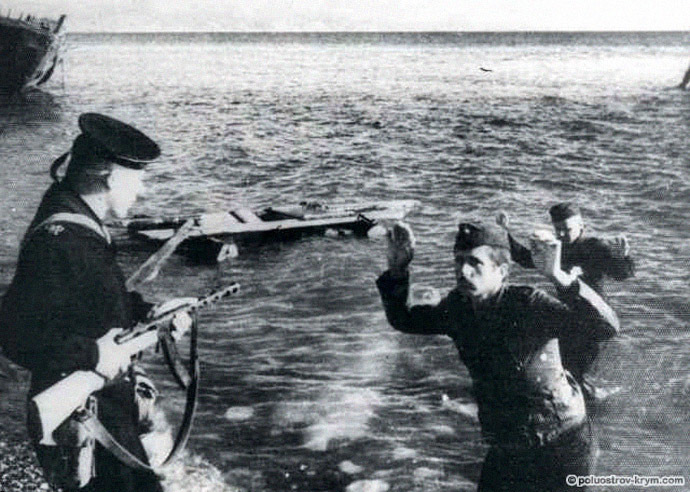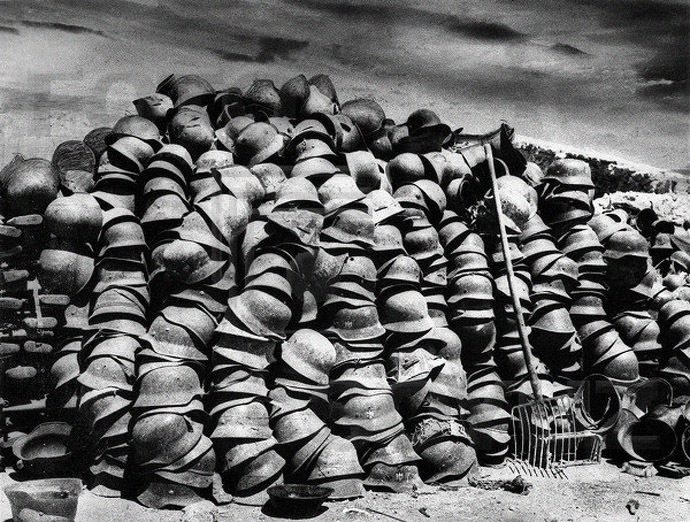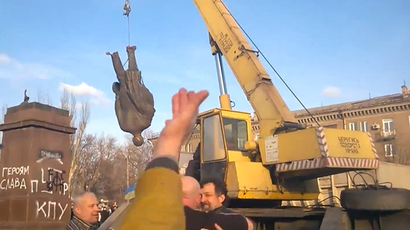Battlefield Balaklava celebrates 70th anniversary of liberation from Nazis

Balaklava, a small town south of Sevastopol in the Crimean peninsula, was where Nazi German and Romanian troops were vanquished on April 18, 1944. Nestling in a beautiful rocky bay, the town was a major prize of war for thousands of years.
This secluded harbor has been a favored haunt of mariners since at least the time of the ancient Greeks, and it has witnessed countless battles between those vying to possess it.

The Battle of Balaklava during the Crimean War is well known for the Thin Red Line action by Scotland's Sutherland Highlanders red-coated 93rd Regiment against the Russian cavalry on 25 October 1854.

During World War II there were two bloody encounters at the location: first when the Soviet troops defended and lost it in 1941-1942, and then when the Soviet troops returned to drive the Nazis out of the Crimea in April 1944.
The battle for the city of Sevastopol started even before the Germans crossed the border with the Soviet Union, as German planes bombed the city at 3:15 in the morning of June 22, 1941.

By October German troops were in Crimea. The Siege of Sevastopol lasted for 250 days, with Balaklava becoming a crucial point of defense of the city. During that time, Balaklava was the southernmost edge of the Soviet-German front that slashed the European continent from the Arctic Ocean in the North to the Black Sea in the South.

Isolated from the main forces, the defenders of Sevastopol and Balaklava fought heroically and effectively. In Balaklava alone, several artillery batteries inflicted huge damage on German troops trying to land ashore and get to Sevastopol from the rear of the defense.

A small group that occupied the ruins of an ancient Genoese fortress that dominates Balaklava’s landscape, held a defensive advantage for months, repelling over 70 onslaughts from German troops. The slopes of the local hills were scattered with thousands of corpses of dead soldiers and officers.

The Germans, under the command of General Field Marshal Erich von Manstein, lost approximately 300,000 troops during the siege of Sevastopol.

In early July 1942, the last defenders of Balaklava were pushed back to the beaches and either died there, or were captured. Very few returned home from German concentration camps after the end of war.

Hundreds of thousands of Soviet troops could not be evacuated from Crimea to the mainland because the Germans had established a total blockade of the peninsula. Practically all of the Russian were slaughtered by the Luftwaffe commanding the air and Manstein’s tanks on the ground.

Even after the Crimean peninsula surrendered, some irregular partisan units continued to operate in the region until the Soviet troops launched a general offensive to recapture the peninsula in 1944.

On April 15-16, 1944, a fast-advancing force under command of General Adrey Eremenko got to Balaklava and liberated it on April 18.

On May 5, Soviet troops launched a decisive general offensive on the remaining German troops who were defending Sevastopol and its suburbs with an estimated 72,700 troops.

Unlike General Field Marshal Erich von Manstein, who spent over eight months storming Sevastopol, Soviet troops captured the city within five days - by May 9, 1944.

Keeping in mind what had happened to the Soviet troops in Crimea in 1942, very few German soldiers were spared in the final battle for Sevastopol.















